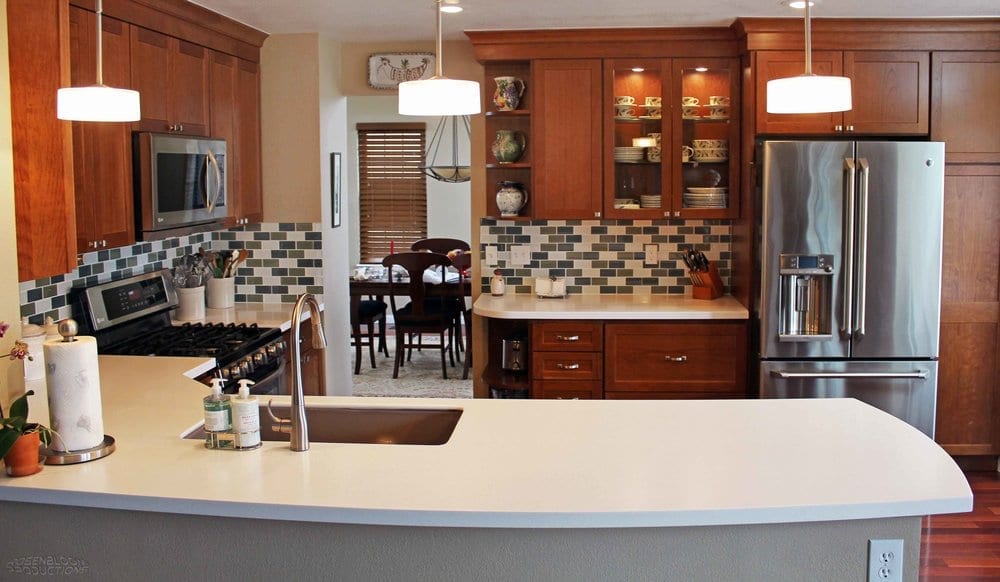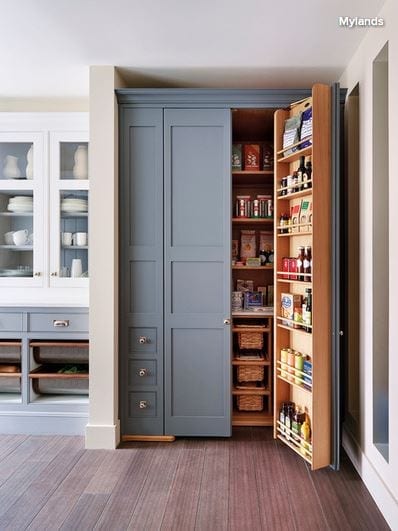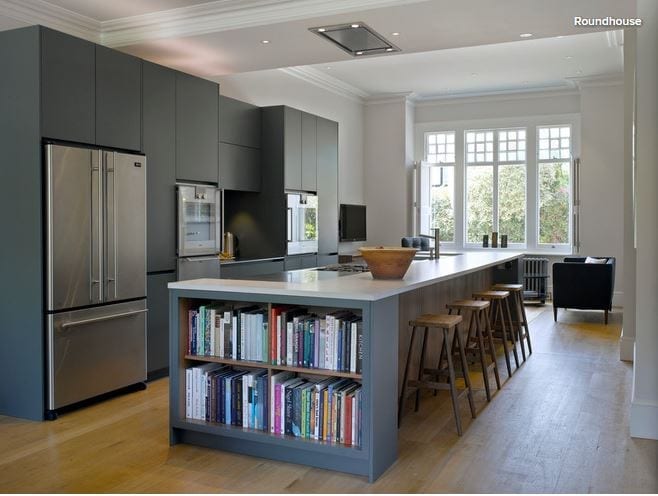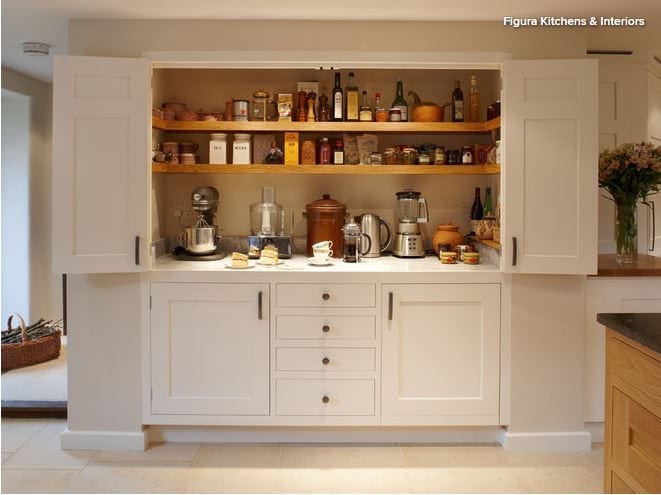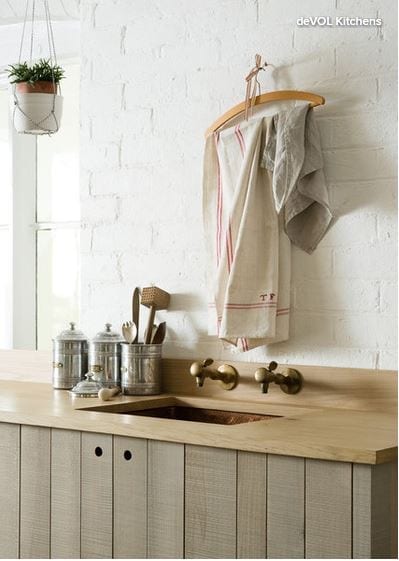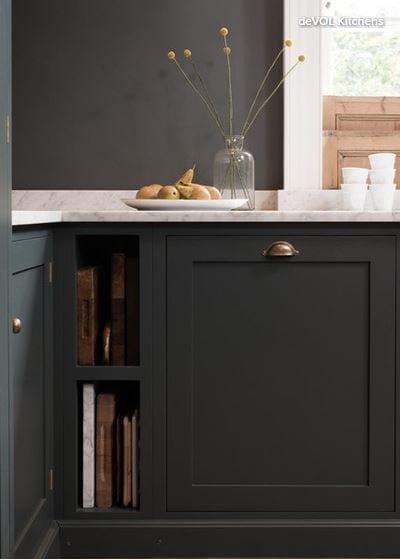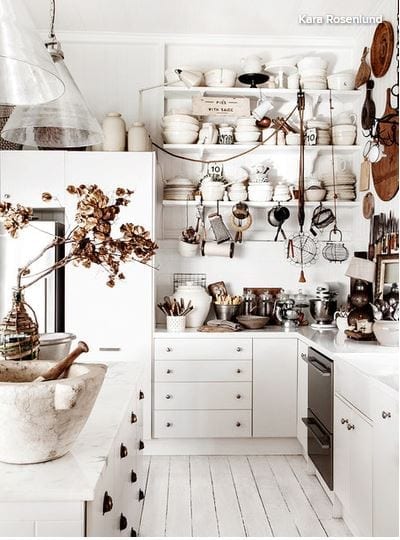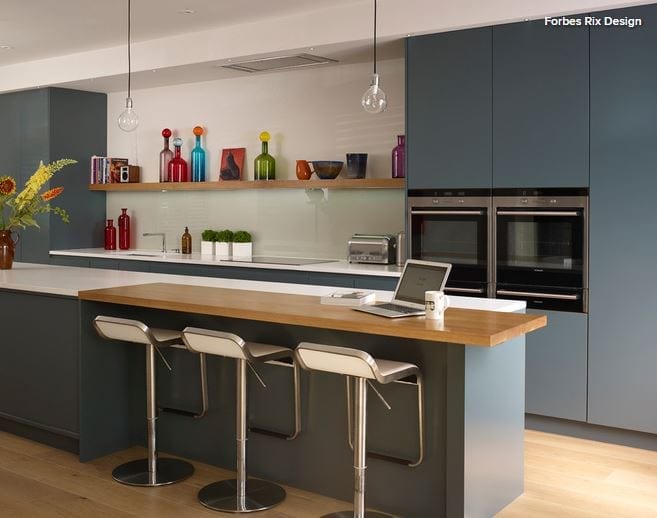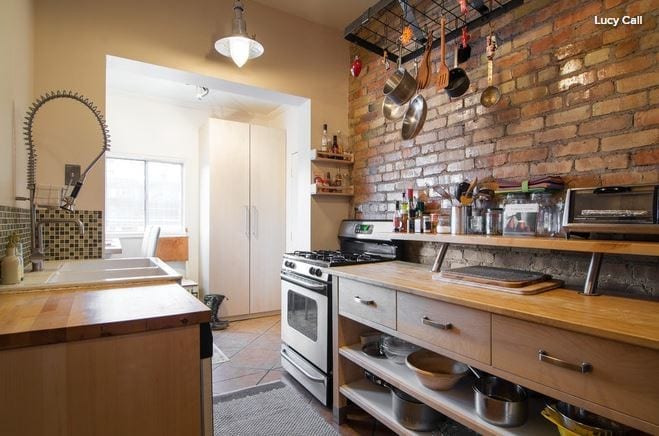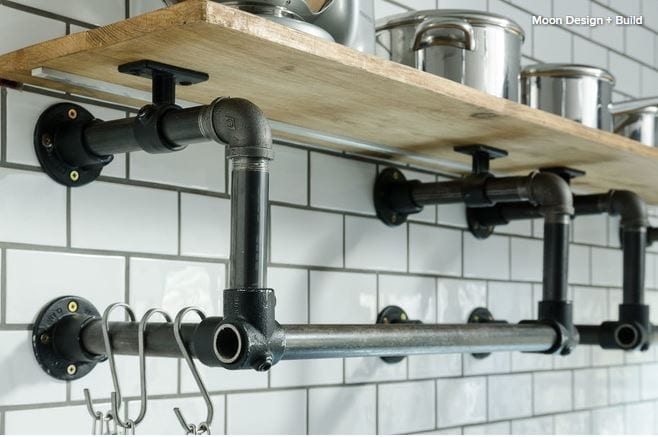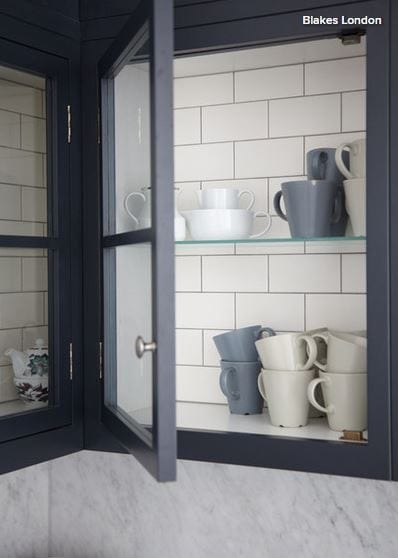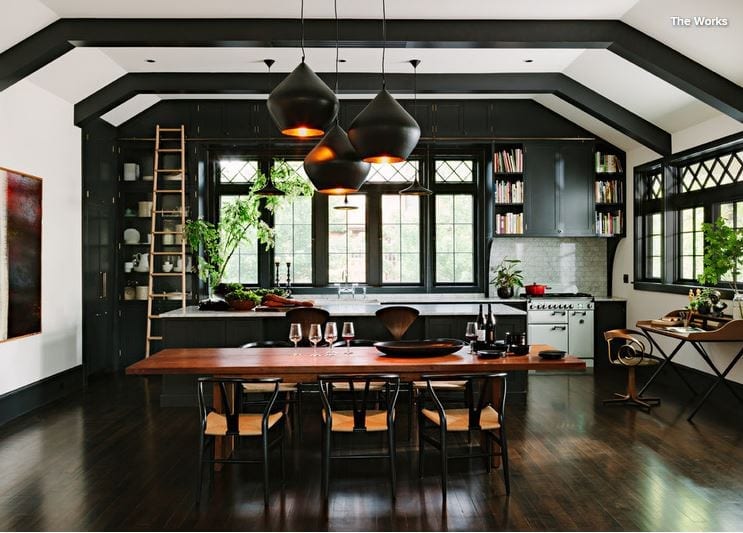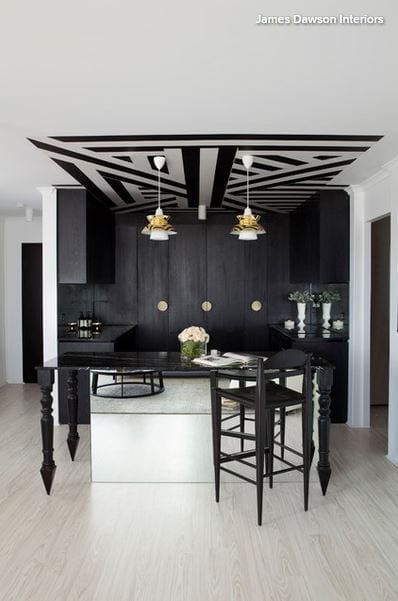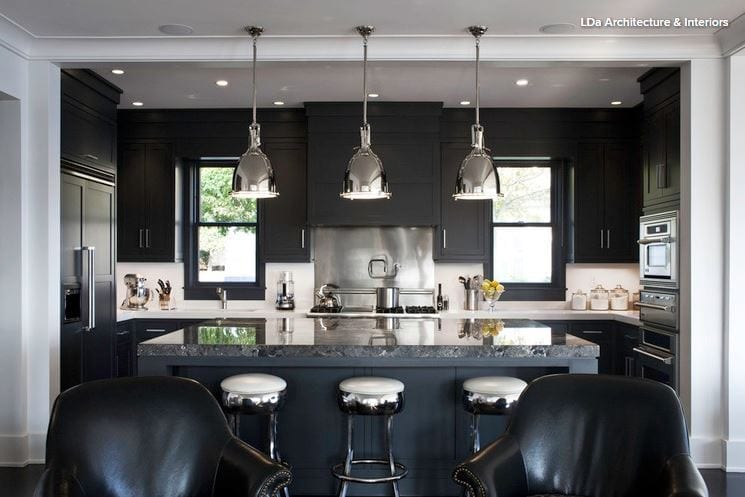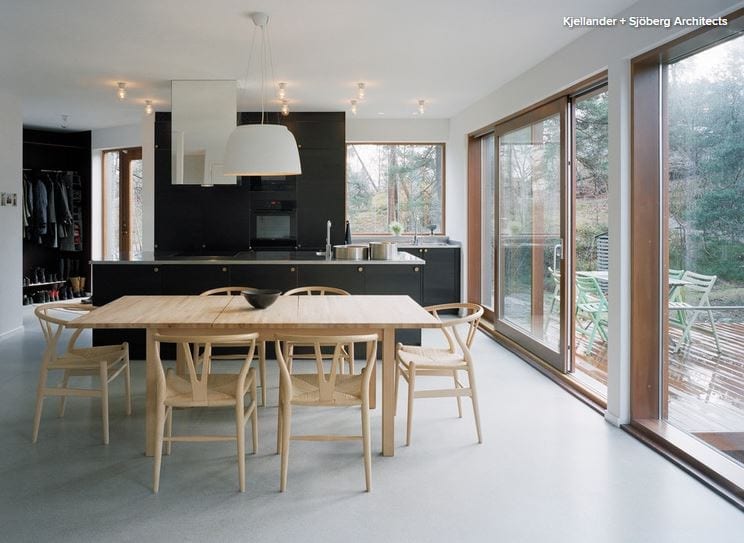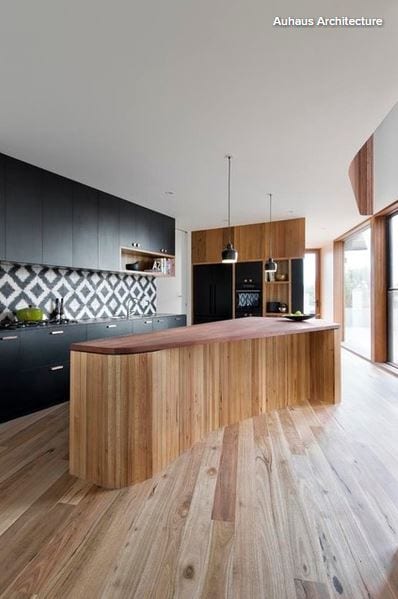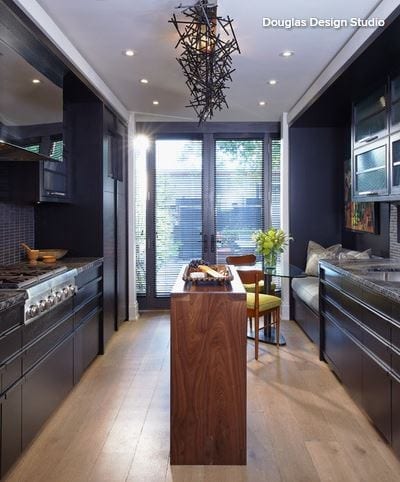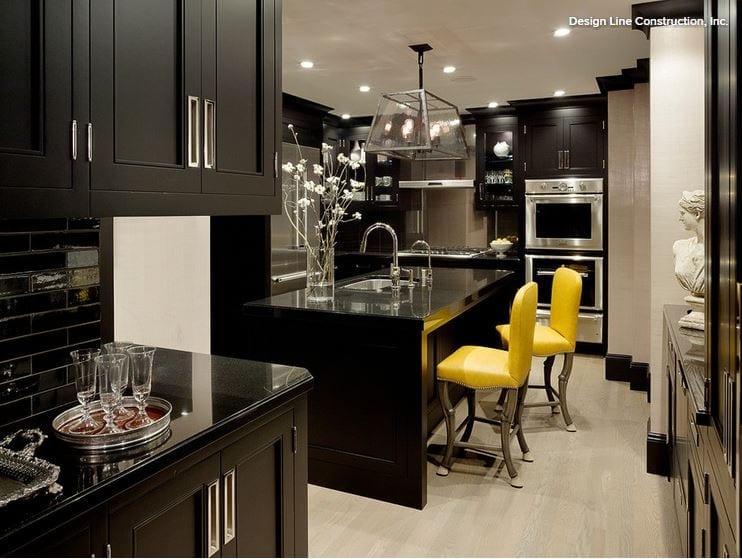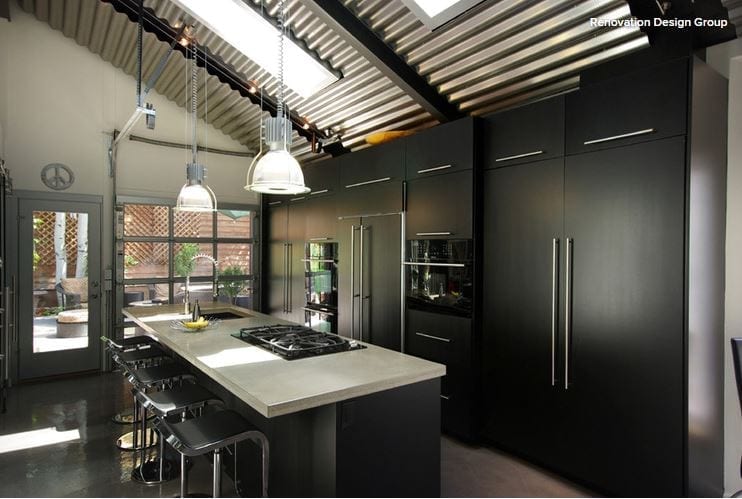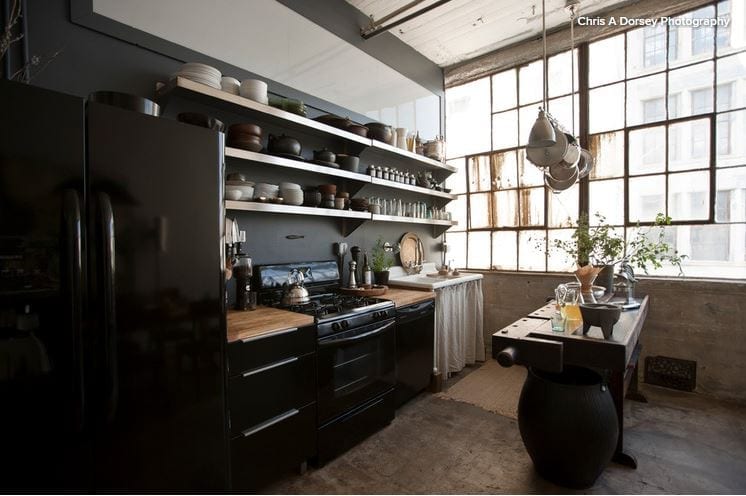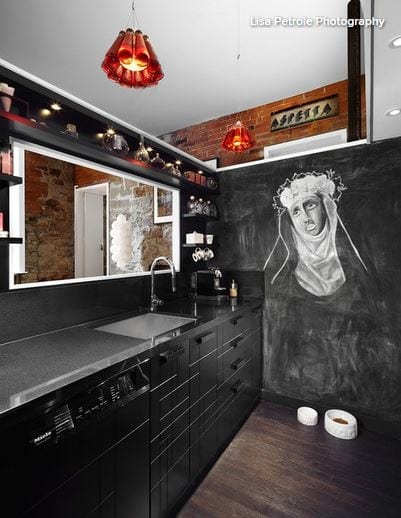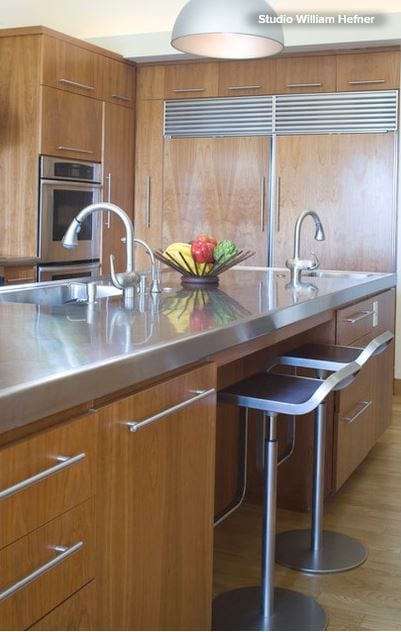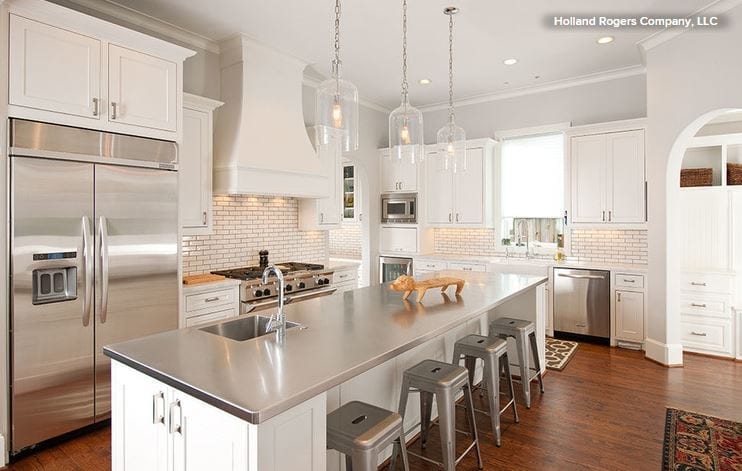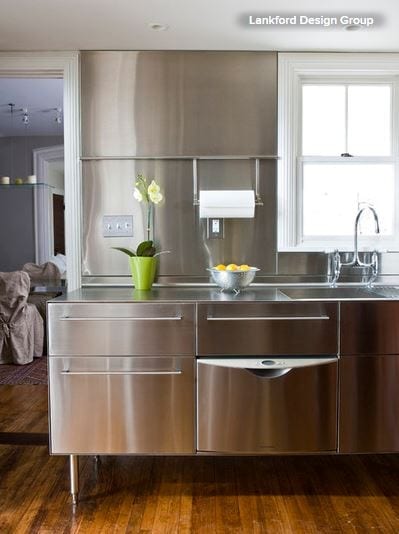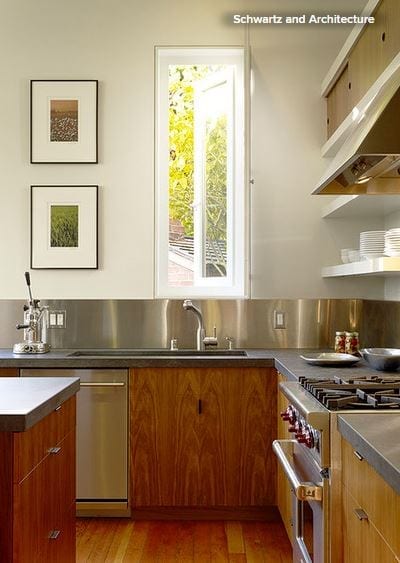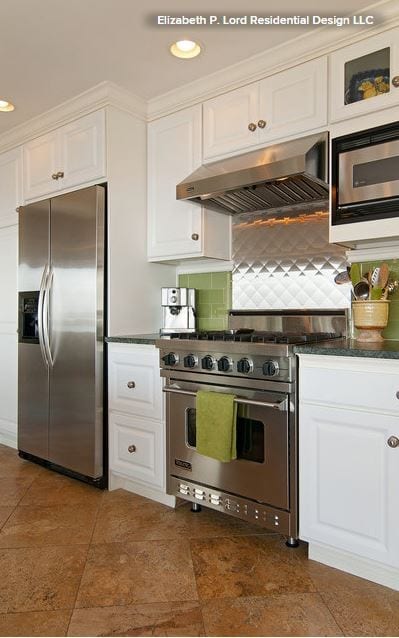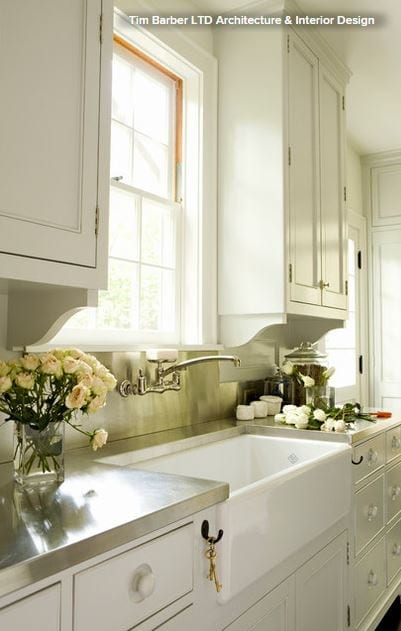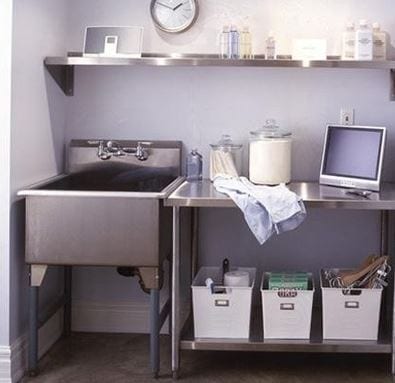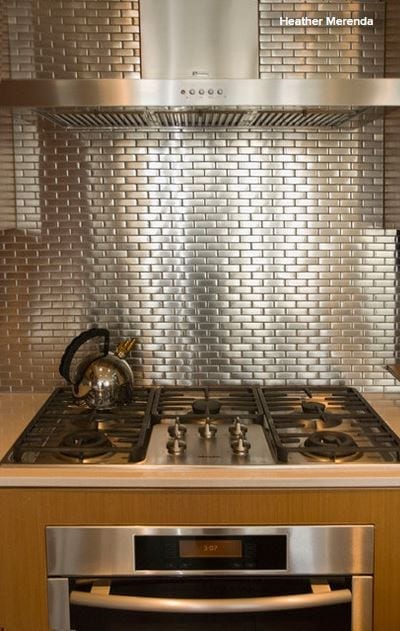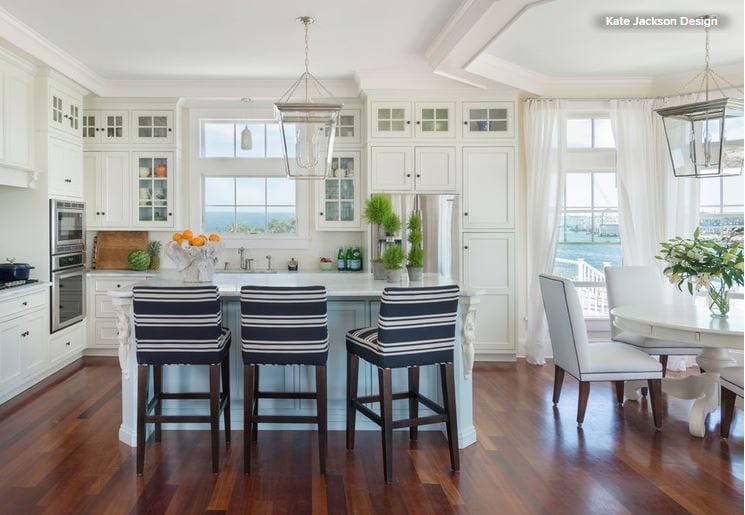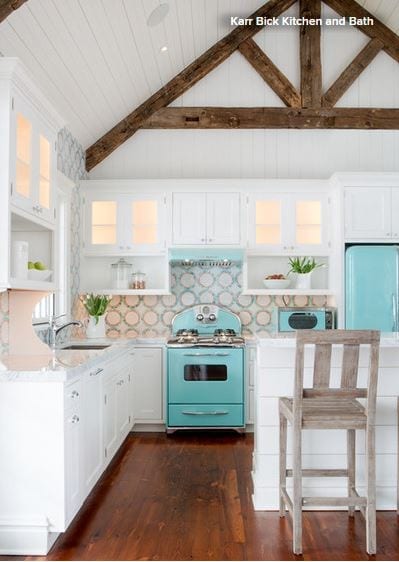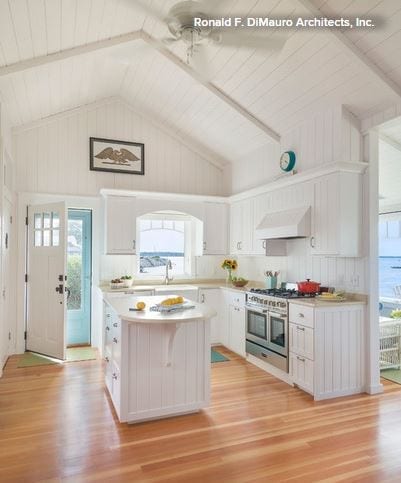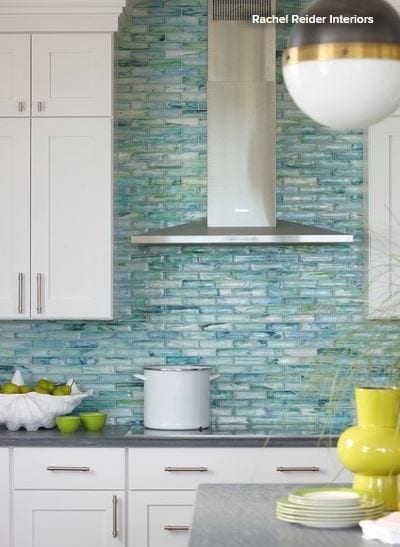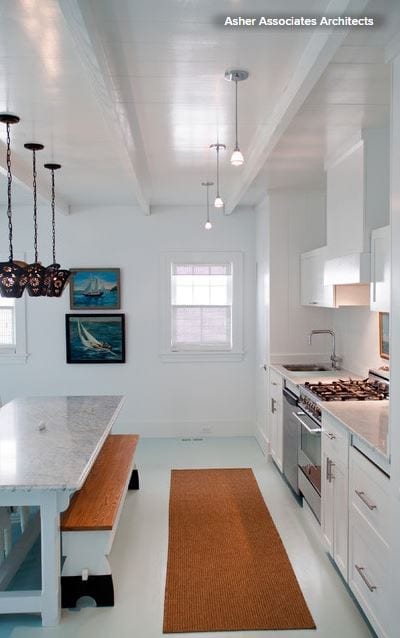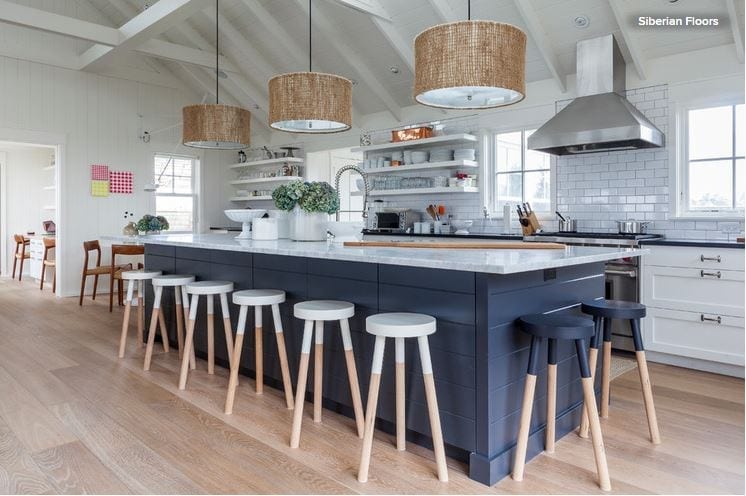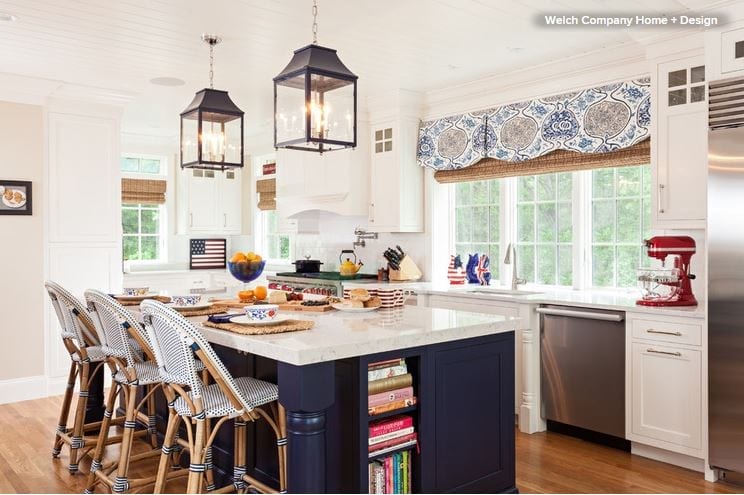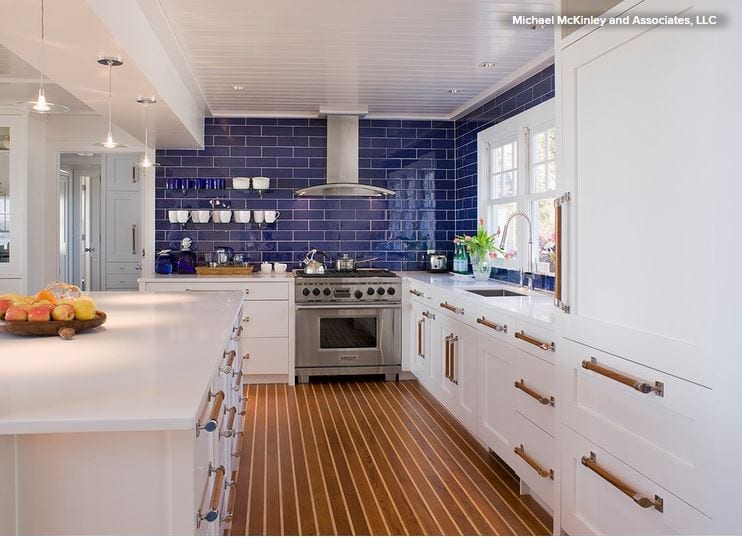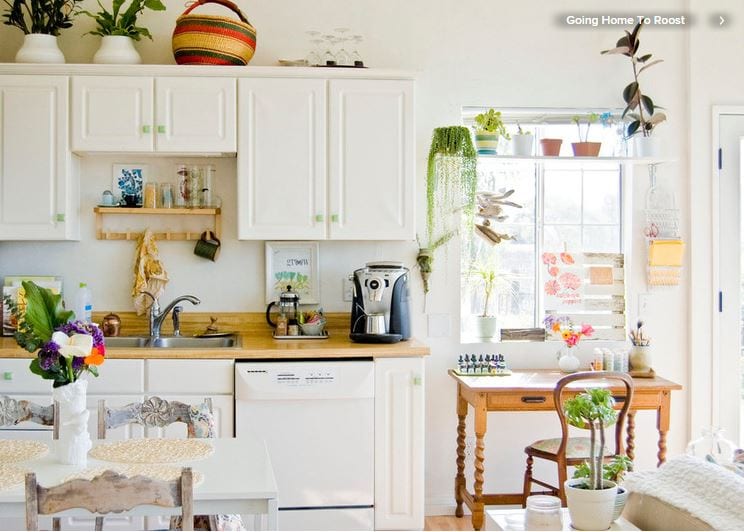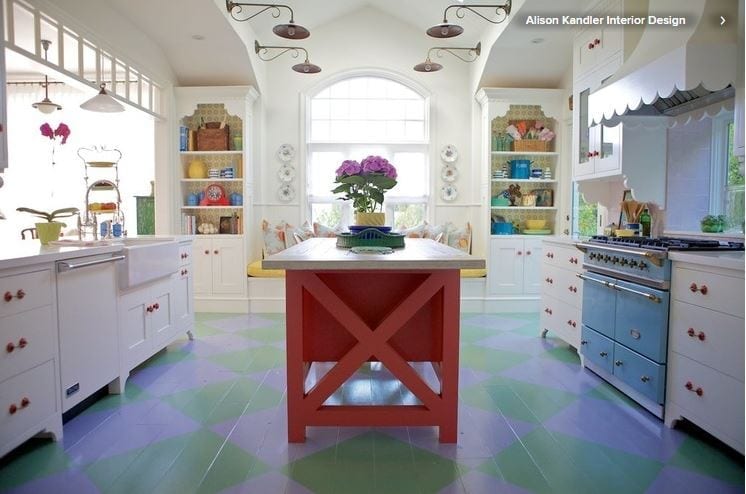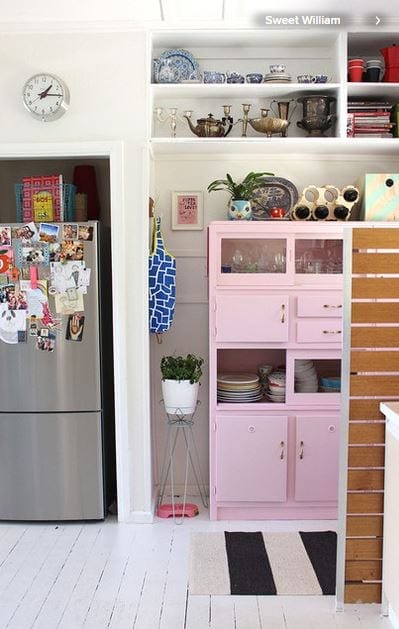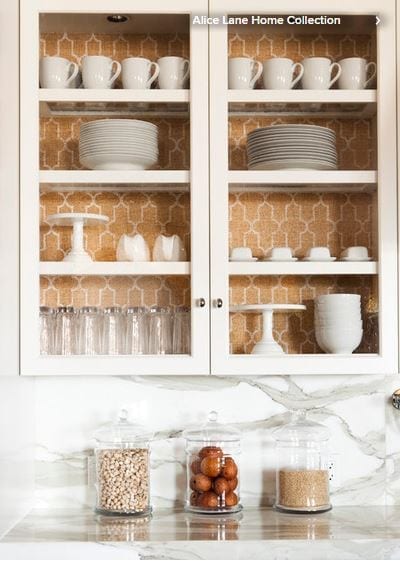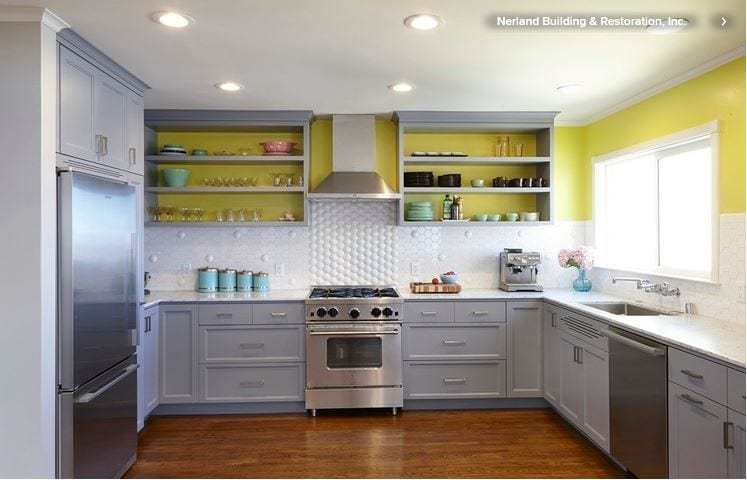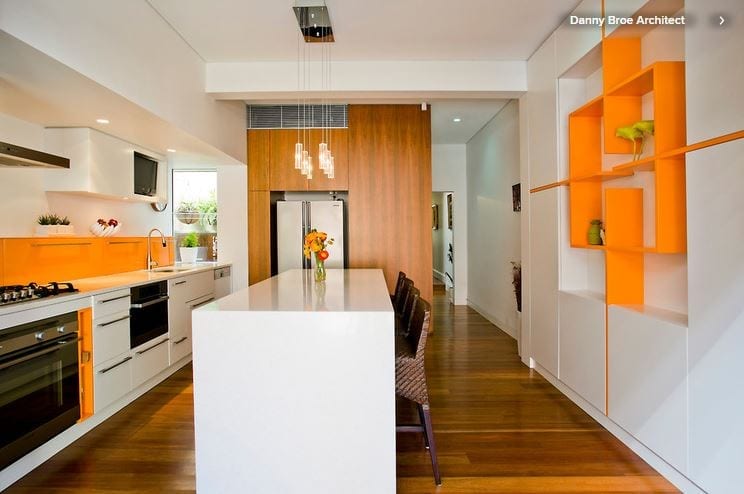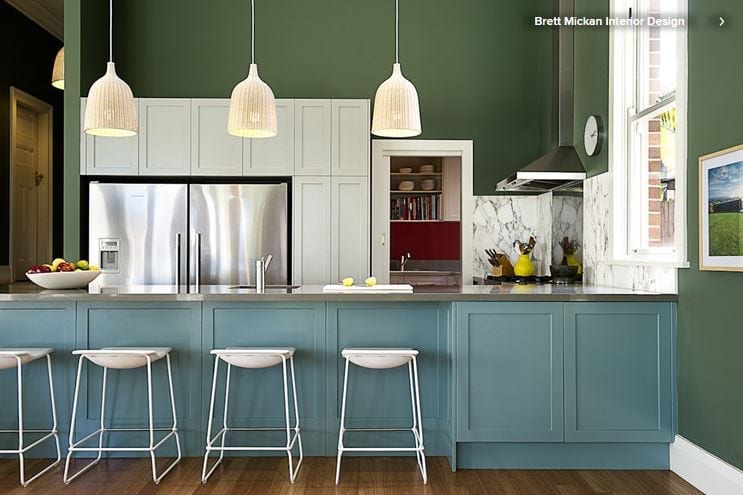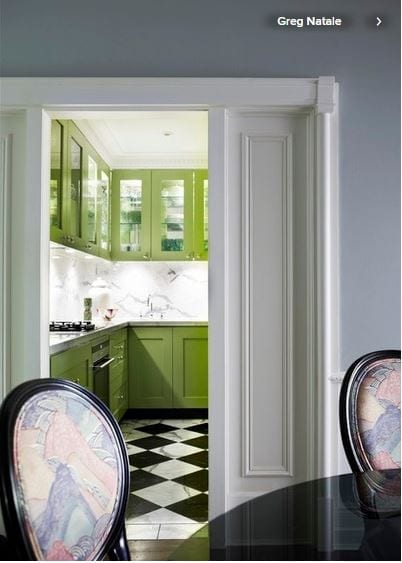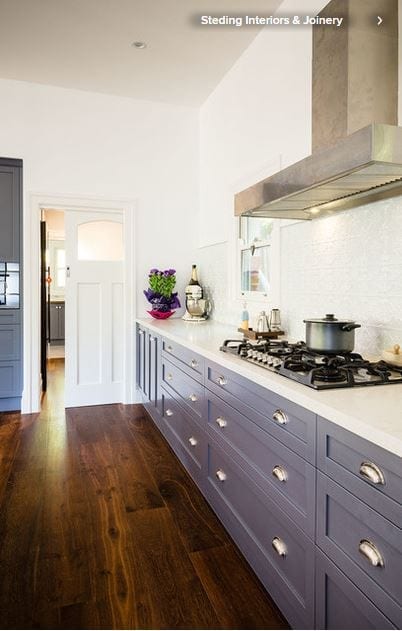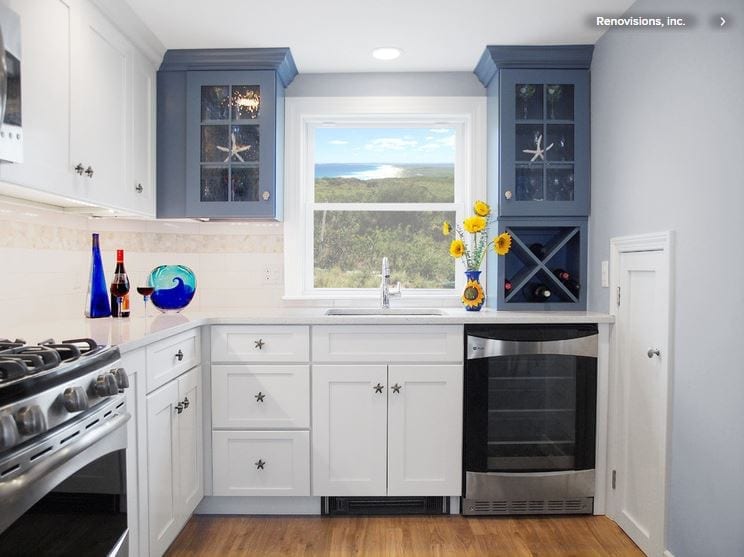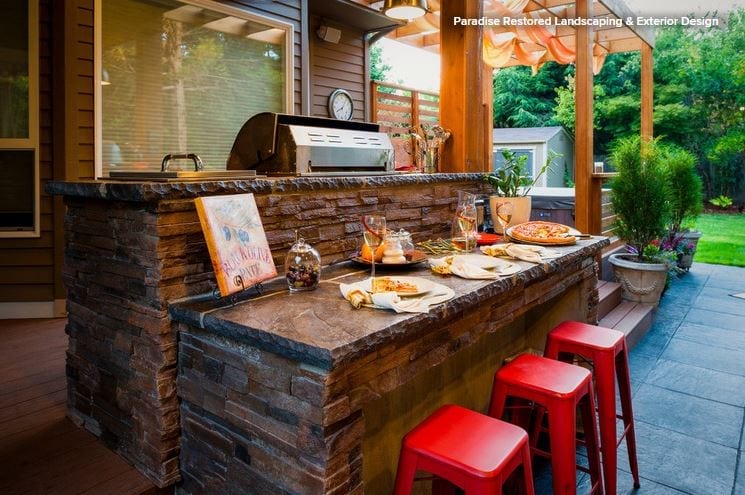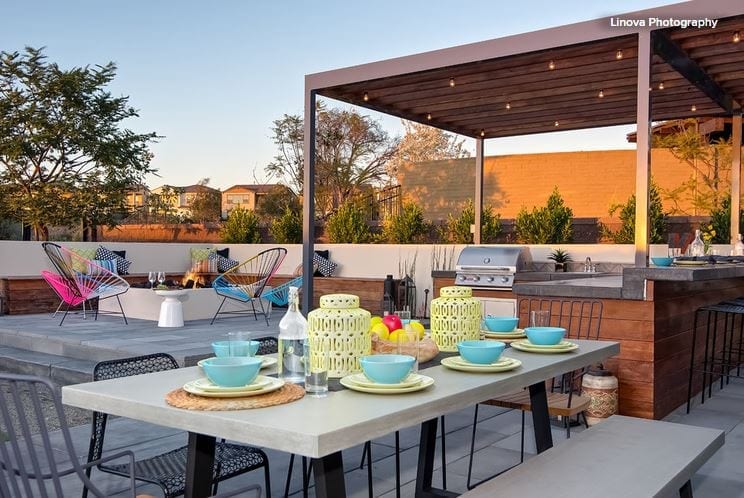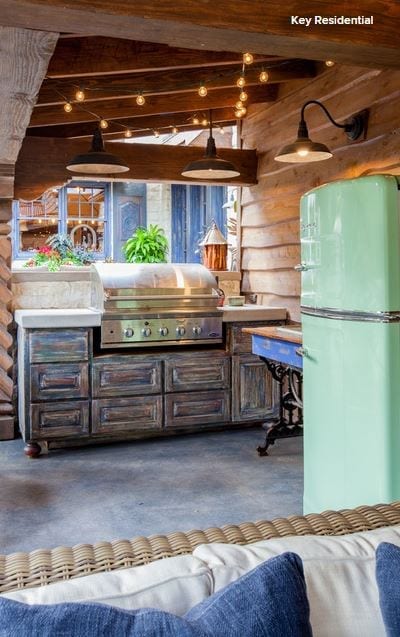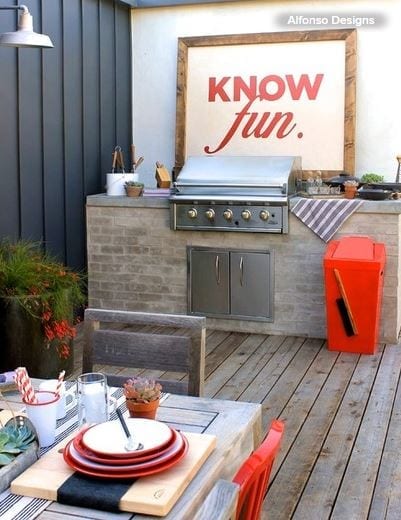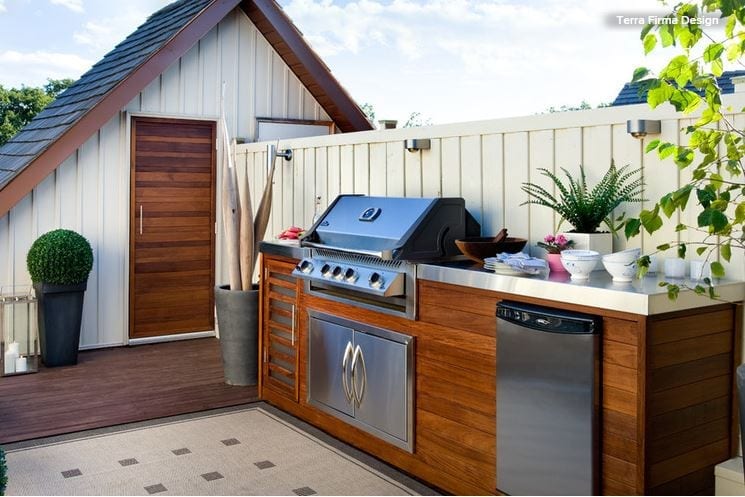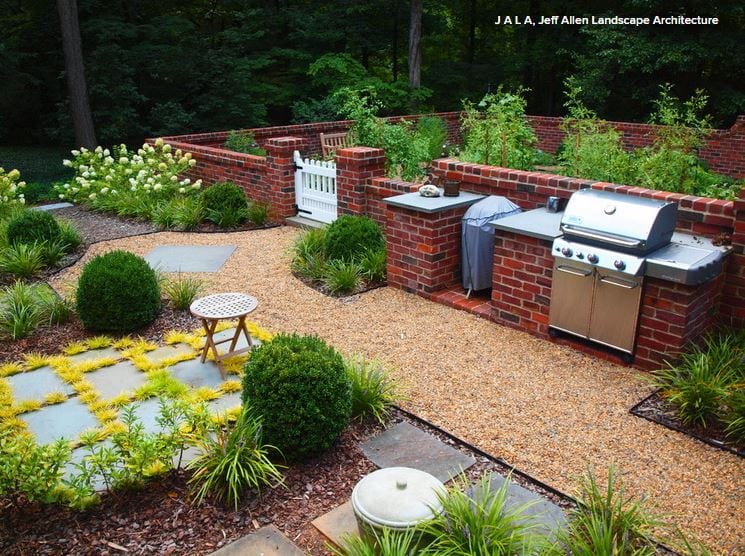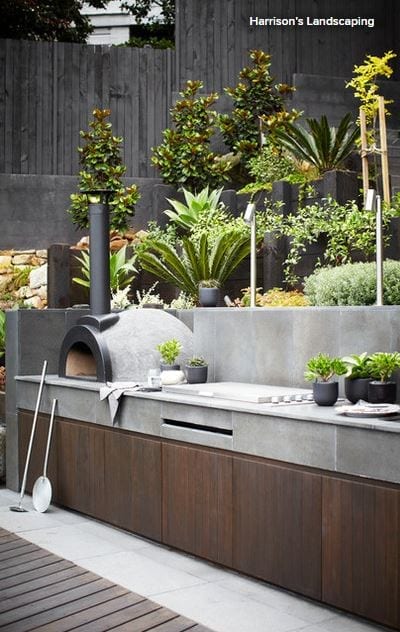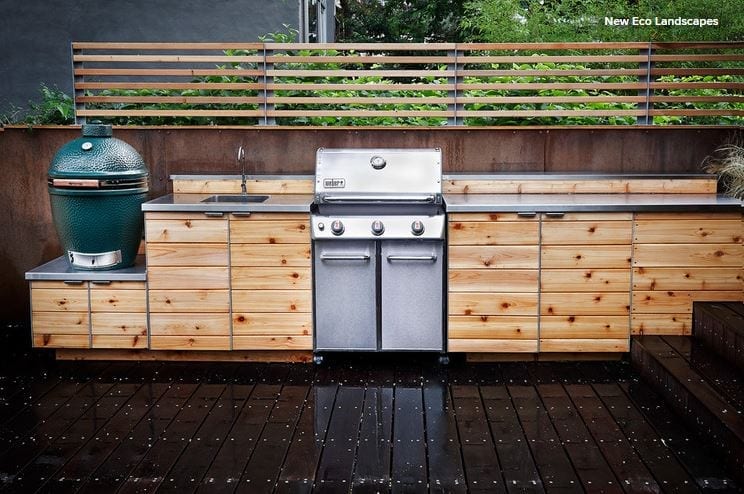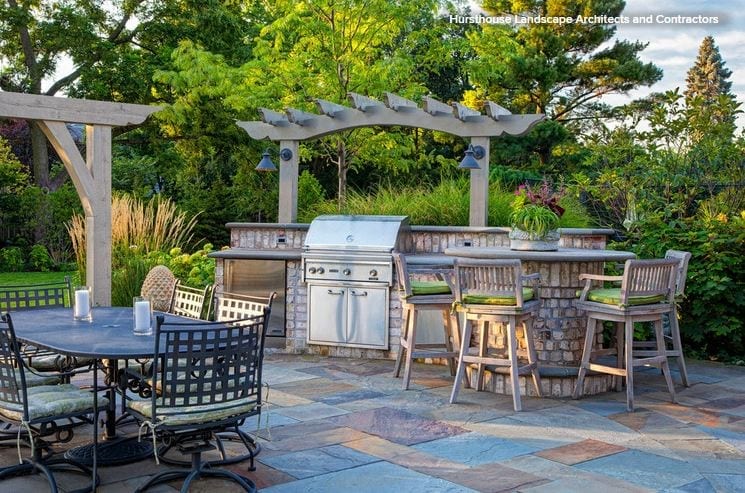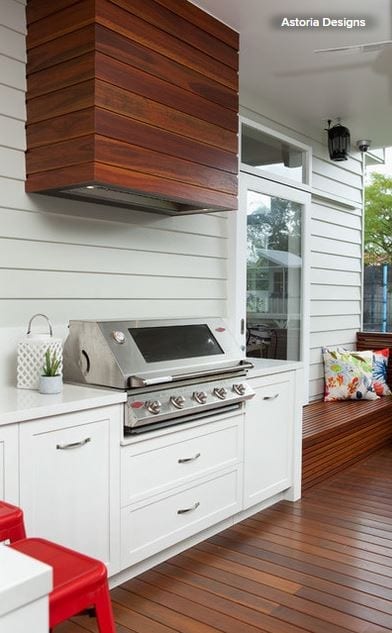When you want seamless design matched with unparalleled beauty in your kitchen designs there is only one place to go American Cabinet & Flooring, Inc.
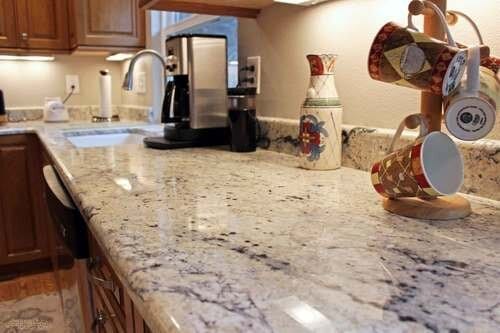
When you want seamless design matched with unparalleled beauty in your kitchen designs there is only one place to go American Cabinet & Flooring, Inc.
Adding contrast is key to bringing out the individual elements of your kitchen #cabinets #countertops #flooring #design
Article by: Joanna Simmons
Kitchens are all about storage, but it can become rather predictable: Think rows of built-in cupboards and wall cabinets, with an emphasis on practicality over personality. So how can your cooking space ingeniously accommodate everything you need while also looking original and exciting? These 10 great solutions offer some fresh ideas — not to mention storage eye-candy!
Go full-size. Pantries are huge news in kitchen storage and for good reason. While a conventional base unit requires you to get down on your knees with a flashlight to find that last can of beans, anything stored in a tall pantry like this one is easily visible and accessible.
Typically fitted with drawers, racks, baskets and even lighting — and performing valiantly even when ultra-slender — these modern beauties offer plenty to love.
Create an island library. Passionate home chefs accumulate lots of cookbooks over the years, but not always the space to store them. Volumes kept near the stove can become scruffy and grease-spattered and perhaps don’t merit being displayed prominently.
How about this, though: neat shelves on the end of an island? The books are visible — and add color — without being central to the design of the kitchen, and they’re easy to grab when you’re searching for a recipe.
Scale up. A pantry that’s also a breakfast station is sure to set any storage fanatic’s pulse racing. This is perhaps the ultimate piece of kitchen furniture, one most of us can only dream about.
It combines oodles of storage with a dedicated space where you can prepare your coffee and toast. You can then stand and gaze at your neatly arranged shelves while you eat. Life doesn’t get much better than that, does it?
Repurpose a hanger. Dish towels go on a cupboard or oven door handle, right? Wrong. You can hang them on a hanger that is hanging on the wall! Original, quirky, inexpensive storage.
Carve out space for the unwieldy. Chopping boards and trays are sizable, often heavy pieces that benefit from a dedicated home like this compartment incorporated into a run of cabinets. It’s such a simple little storage detail, but so invaluable.
Ditch convention. This pale and unpretentious kitchen may not be to a neat freak’s taste, but there’s something to be admired in its anything-goes approach to storage.
Superficially cluttered though it may appear, I suspect its owner knows exactly where everything is and that all the essentials are within a quick grab from the stove.
Opt for a lovely long shelf. There’s a growing trend for long shelves that simply break up a run of units rather than provide workaday storage. They can become home to beautiful objects or the odd cookbook or plant, helping to personalize a built-in design and lighten its look.
Hang it high. Making use of vertical space is a smart move in a kitchen, where storage often has to be worked into a small footprint. This space features a metal rack that was probably never intended for a kitchen but works beautifully holding pans and utensils.
It’s attached high on the wall to reduce the risk of banging a head against a frying pan!
Resist the sleek. Kitchen design often tends toward the sleek and efficient, but it can also rock a more edgy, homemade look while still packing in tons of practical storage. So think laterally and use old piping and boards to make some shelving — you’ll get storage and original style at the same time.
Add a twist to the typical.Kitchen storage needs to be well-designed and abundant enough to hold everything from mugs to marmalade. But really great kitchen storage does it while adding a twist of unique style.
These glass-fronted cupboards are fairly basic, but the tiling on the interior adds detail and interest and contributes to the kitchen’s industrial feel.
Article by: Becky Harris
White kitchens have reigned for several years now, but black kitchens are gaining ground. They can add a sleek touch, put the focus on a view and contrast materials like nobody’s business. Whether it’s used in an industrial space in Brooklyn, a fashionable apartment in Australia, a villa surrounded by forest in Sweden or a library-turned-home in Oregon, there are good arguments for going dark in the kitchen in all kinds of homes.
1. In this Oregon library-turned-home, the interior designers at Jessica Helgerson Interior Design let the kitchen recede into the background and put the focus on the fantastic windows, which were painstakingly replicated from the originals. Black was used on the trim and built-ins throughout the open plan. Between the open shelves full of cookbooks and the rolling ladder, one can see the library spirit is still alive and well in the home.
2. In this flawlessly chic Miami, Queensland, Australia, apartment, interior designer James Dawson had the freedom to go graphic. When facing in the opposite direction from the view here, you have a full view of a marina. When facing the kitchen, the eye goes up to an op-art “wallpaper” treatment on the ceiling. (Dawson drew the pattern, then had the wallpaper crew cut and apply the shapes.)
Sleek black wood-veneer cabinets and black marble countertops keep a streamlined look, while mirrored backsplashes on either side bounce the light around. Using the black created a strong contrast that doesn’t compete with the view.
3. This black kitchen also opens to much lighter rooms with coastal views, so it recedes into the background in a sleek, sophisticated way. The designers at LDa Architecture & Interiors were inspired by the rocky Massachusetts coastline right outside the home when choosing the countertop. This large slab creates a stunning middle ground between the black and white.
4. This villa perched in the forest outside of Stockholm, Sweden, emphasizes different views, that of trees and moss. (In fact, it is named Villa Vy, and vy is Swedish for view.) Suitably, the designers at Kjellander + Sjöberg Architects put the focus beyond the glass on the trees and the moss by creating a black kitchen. The color also helps the space look less like a kitchen within the open plan.
5. The Aussies certainly have the black kitchen thing down. Auhaus Architecture chose a matte black finish for the laminate cabinets here. The finish is just the right complement for all of the natural wood, which includes spotted gum flooring in a Bona Natural finish and an island top of grey box (a highly durable hardwood). Both the woods and the black laminate take a backseat to the stunning graphic Moroccan tile cement tile backsplash.
6. Jeffrey Douglas of Douglas Design Studio recommends making sure that a kitchen has good light showing through from different angles before going black. This kitchen gets plenty from the large windows and doors and another window in the backsplash (not shown). This is also a story of wood — the cabinets are Canadian red oak with a charcoal stain. Engineered white oak flooring, a light ceiling and a rich wood island add warmth.
7. Interior designer Candace Cavanaugh specified black-brown when coming up with a custom color for these cabinets. The hue adds an unexpected warmth to the dark room. She then custom designed taxicab-yellow counter stools to add a playful dash of color. The overall look is glamorous and unexpected.
8. Renovation Design Group gave this bungalow the contemporary loft-like feel that the owner preferred. The black cabinets fit right in with the industrial-style corrugated ceiling, glass garage door, concrete countertops and stainless steel accents.
9. This industrial kitchen in Brooklyn, New York, used to be an industrial woodshop. Appropriately, the island is a well-worn vintage workbench. Dark cabinetry and appliances put the focus on items that homeowner Alina Preciado has collected on her worldwide travels, including spices and unique teapots.
10. In this creative Toronto loft, the galley kitchen’s appliances and cabinets have a sleek, streamlined look, putting the focus on the exposed brick and unusual light fixtures. And, of course, on the chalkboard wall, which invites clever artwork (in fact, this made our chalkboard art hall of fame). Note the way the lighting helps highlight the objects along the top shelf.
Article by: Bonnie McCarthy
For the past few years, designers have debated whether or not stainless steel will continue to reign supreme in kitchens across America or lose its popularity to glossy black or white appliances boasting sleek, smooth finishes.
While the trendsetters debate, however, millions of us continue to choose to live with the commercially cool look and functionality of stainless steel. Whether you have a little or a lot of the shiny stuff, here’s what experts suggest we do about those fingerprints, and how to care for and clean one of the hardest-working surfaces in the house.
Keeping Stains off the Stainless. Aside from looking great and having a smooth, nonporous surface that hinders the growth of bacteria and other microorganisms, one of the reasons stainless steel is so widely used in professional kitchens is that it won’t rust easily in spite of daily wear and tear.
Unfortunately, that doesn’t mean rust and stains can’t happen.The experts at the North American Association of Food Equipment Manufacturers say that if the protective film on stainless surfaces is scratched with a steel pad or wire brush, comes into contact with hard water that is allowed to puddle or sit, or is exposed to chlorides from household cleansers, it becomes vulnerable to damage.
Safety first. For safe care and cleaning, start with the right tools. The European Stainless Steel Development Association, or ESDA, suggests using soft sponges and microfiber cloths as the first line of defense.
Don’t clean with steel scouring pads, which can scratch. Instead choose plastic scrubbing pads for tough jobs.
Go with the grain. On stainless steel surfaces with brushed or polished finishes, always wipe and scrub in the same direction as the “grain” lines in the metal.
Better with age. The ESDA says in addition to the availability of an increasing number of fingerprint-proof finishes, regular stainless steel shows fewer fingerprints over time. Patience is a virtue.
Stainless solutions. When it comes to choosing cleaning products, Mindi DiNunno, owner of Polished 2 Perfection, says whatever you decide, the key to cleaning is sticking to it. “Stay consistent,” she says. “Most cleansers don’t blend together well, and it makes it much harder to keep perfect. For appliances, we use CLR [Stainless Steel Cleaner]. It will clean off any hard-water stains from the water and ice dispenser and any drips or food.”
Like the other experts, she says to make sure to go with the grain.
Since products containing chloride can be harmful to the protective finish on stainless steel, the ESDA advises using the following:
Naturally clean. For a DIY approach to cleaning using pantry items, the sustainable-living team at Eartheasy advises dampening a cloth with undiluted white vinegar or olive oil and wiping in the direction of the grain.
To clean a stainless sink, it suggests pouring club soda on an absorbent cloth to scrub, then wiping dry.
Shine on. Spray cleansers made specifically for cleaning decorative stainless steel surfaces usually contain silicone oil, and although they will remove fingerprints and smudges, they will not prevent them. The ESDA says the silicone oil can be completely removed by washing with mild soap and water.
Using a polishing paste is another way to keep stainless sparkling. Commercially sold pastes, such as 3M Marine Metal Restorer and Polish, will create a microscopic wax layer on the surface that will make it easy to clean. Since the pastes are resistant to detergents, treatment with a polishing paste may last several months. It can be removed using alcohol on a soft cloth.
It’s important to note that pastes and sprays meant for cleaning decorative stainless steel elements — refrigerator doors, kitchen backsplashes — should not be used on pots, pans or surfaces where food is prepared.
Do not use silver dip polishes, like the ones used for cleaning jewelry, because they are corrosive to stainless steel.
Article by: Laura Gaskill
Whether you live at the coast or just love beach style, this fresh-as-a-summer-breeze look can make just about any kitchen feel a bit closer to the sea. From remodeling projects (hello, aqua appliances!) to smaller accents (striped bar stools) see which of these 10 ideas would be at home in your kitchen.
1. Striped stools. You can’t get much more classic coastal than blue and white stripes — pull up to your island a set of bar stools upholstered in striped fabric for a quick kitchen update. If you’re worried about spills and stains in this high-traffic zone, choose a stain-resistant indoor-outdoor fabric for easier cleanup.
2. Aqua appliances. Who says appliances have to be boring? Colorful vintage-inspired new appliances make a bold (and very fun) statement. Aqua and turquoise are beachy hues that look great in a crisp white kitchen.
3. Shiplap or tongue and groove paneling.Covering plain drywall with shiplap or tongue and groove paneling (either horizontal or vertical) is a clever way to bring character to a newer build that lacks architectural detail. Continue the shiplap on the ceiling and cabinetry, and paint it all fresh white for a seamless look.
4. Iridescent tile. The shimmer of an iridescent tile backsplash calls to mind the glint of sun on crystal-clear water and pearly shells beneath the waves. Even a small tiled area can make a big impact when it’s this gorgeous, so consider splurging on the tile you really want, even if it must be in a smaller area.
5. Painted floors. If the wood floors in your kitchen have seen better days, a painted finish can revive them and give your room a fresh beach-house look at the same time. If you’re concerned about wear and tear, consider using marine paint — the type made for boat decks. It’s designed to stand up to saltwater, so it can certainly handle a few cooking spills.
6. Textured pendant lights. Using natural-fiber textiles in the kitchen brings an earthy, casual vibe perfect for a beach-style space. Using pendant lights, like the ones shown here, is more practical in the kitchen than using a natural-fiber rug, since crumbs and spills can be nearly impossible to completely remove from a textured rug. For the best ambience, choose pendants with a filter to diffuse the light on the bottom.
7. Bicolor stools. Color blocking brings to mind nautical flags — navy and white is a classic (and more subdued) combo, or go bolder with yellow or red. If you can’t find counter stools already painted, buy plain ones and paint just the upper (or lower) third yourself.
8. Bistro stools. For a French Riviera take on the coastal look, go for counter-height versions of classic navy and white bistro chairs. They are chic, comfortable, lightweight and easy to clean.
9. Navy island. White may be the standard for a beachy kitchen, but navy isn’t far behind. For a moderate kitchen makeover, consider painting just the base of your island a rich navy blue — it’s a small area, so it won’t take too long or cost too much, but the impact can be huge.
10. Yacht-inspired details. Inspired by the boats in the harbor outside their coastal Connecticut home, these homeowners went with holly and teak flooring reminiscent of a ship deck. The cabinet hardware is custom made from boat handrail stanchions and teak dowels, creating a designer look at a fraction of the cost.
Article by: Natasha Saroca
Is your kitchen lovely and large, or is it on the smaller side? If it falls into the latter group, I can sympathize. I spent the better part of last year living in a studio apartment with a single-wall kitchen that was a measly 32 square feet (3 square meters). However, it wasn’t the shortage of square footage that was the problem, but rather that the cooking zone wasn’t the smartest, most efficient or space-savviest of kitchen designs. (For instance, it had no usable work area, as the sink and cooktop took up pretty much all of the countertop space.)
Since I was only renting the apartment, I couldn’t renovate the area, but that didn’t stop me from mentally writing a list of improvements I’d make if given the chance. Here are some of the design tricks I would have used to transform the spatially challenged kitchen into a cooking zone that was big on functionality, space-maximizing solutions and visual appeal, and that offered the illusion of spaciousness, too. Borrow these ideas when tackling your own cramped-kitchen makeover or, if you’ve successfully revamped a compact cooking zone for the better, share your must-try design moves in the Comments section.
1. Add a mirrored backsplash. A strategically placed mirror works wonders when it comes to creating the illusion of spaciousness in a cramped room, as it will bounce light around and help visually elongate the walls. An easy way to introduce this reflective surface into a small kitchen is by way of a mirrored backsplash — a sneaky and extremely effective design trick used in this compact cooking zone.
2. Be open to open shelving. While not everyone is a fan of open shelving, there’s no denying it’s a smart storage solution for rooms with a modest footprint. Not only do open shelves deliver an airy, open and bulk-free look — unlike cabinets with solid doors, which can look visually heavy in a small space — but they also ensure that kitchen essentials are easily accessible, too. Hanging storage, another functional and space-maximizing solution spotted in this cooking zone, achieves a similar effect.
If you’re eager to incorporate open shelving, just be mindful that the shelves will require a little extra upkeep to ensure that they and their contents remain dust free.
3. Opt for an all-white palette. Choosing an all-white color scheme will make your compact kitchen look light, airy and more spacious than it is in reality. If an all-white palette isn’t up your decorating alley, or you desire a scheme that offers more visual drama, opt for white walls or overhead cabinets, and try base cupboards made from wood or dressed in a dark, dramatic tone. Using white up top will enlarge the space visually, while the darker tone down below will anchor the room without making it feel closed in.
Alternatively, you might like to consider a soft neutral or pastel palette. Barely-there hues such as powder blue, mint, cream or dove gray are ideal for use in small spaces, as they add a hint of color and interest without being too overwhelming or heavy like bolder, more saturated tones, which can weigh down a compact room.
4. Fill your space with light. Flooding your room with natural light will go a long way toward making a small area look more spacious. However, if you’re restricted when it comes to window placement and size, the next best thing is to come up with a lighting plan that will brighten up and help visually enlarge your space, while transforming it into a more functional work zone, too.
This airy, cheerful kitchen is lucky enough to boast four different light sources: a generously sized window, which allows an abundance of natural light to filter into the room; a ceiling light that provides ambient lighting; a long wall-mounted fixture that illuminates the area from above and draws attention to the sunny feature wall that it’s affixed to; and undercabinet lights that ensure the countertop is well lit and showcase the suspended style of the overhead cabinets, which adds to the room’s sense of spaciousness.
5. Create the illusion of space with horizontal and vertical lines. This striking kitchen is a study in how to enlarge a space visually by introducing vertical and horizontal lines. As you can see looking at the striped cupboard doors and panels in this compact cooking zone, vertical lines draw the eye upward and add height to a small room, while horizontal lines add depth and make narrow spaces appear wider and roomier.
6. Incorporate space-savvy storage. A shortage in storage is a problem usually associated with small kitchens. However, this obstacle can be overcome by incorporating clever, space-maximizing storage solutions in your cooking zone — think corner drawers, appliance garages, pullout vertical pantries, drawer organizers and corner systems. Doing so will ensure that everything has a place to call home in your kitchen, cutting unnecessary clutter and visual bulk and making the area more effective to work in.
7. Go with glossy finishes. High-shine surfaces, such as stainless steel, two-pack polyurethane and ceramic tiles, will not only inject your kitchen with interest and sleek sophistication, but will amplify the natural and artificial light in the room, making the area appear more spacious.
8. Choose a countertop that works double time. Since space is at a premium in small cooking areas, it’s important that every surface, material and design element earns its keep, even your kitchen countertop. While countertops have a practical purpose — as food prep surfaces and general workspace — they can also double as a space to stash kitchenware (such as the crafty pullout chopping board pictured here), which will help keep your counter and cupboards free of physical and visual clutter. Other space-saving, cleverly concealed countertop accessories you might like to consider include a built-in utensil holder, condiments organizer, knife block or bread box, each of which sits flush with the top of the counter.
9. Choose glass-front doors. Like open shelving, glass-front cupboards trick the eye into thinking a compact kitchen is more generous in size, but with the benefit of keeping the contents of your cupboards free from dust and cooking splatter. Just remember to keep things nice and orderly inside for a clean, clutter-free look.
Another perk of decking out your cooking zone with glass cabinet doors is that you can easily see what items are stashed inside your cabinets and when you’re running low on pantry items, resulting in a more efficient space to work in.
10. Fit in a cleverly concealed table for casual eats. Don’t have room for a breakfast bar or dining table in your kitchen? Take design cues from this crafty space and incorporate a foldable table that can be tucked out of sight when not in use. The geometric chairs slide into the nook below, so as to not take up precious floor space and to enhance the room’s clean, seamless look.
Another space-savvy solution is to equip your countertop with a pullout table, like the one shown above.
11. Stick with clean, slender lines. Resist the urge to decorate your compact kitchen with fussy design elements and decor that will crowd it and add unnecessary visual bulk. Instead, stick with features with clean, simple lines that are visually lightweight and don’t consume too much floor space.
This design trick takes shape in several ways in this small yet stylish kitchen. Note the slim breakfast bar, floating shelves and leggy bar stools; the use of finger pulls instead of bulky handles; and the simple industrial-style exposed bulbs, which draw the eye up to the ceiling, adding to the illusion of space.
12. Master the art of distraction. A high-impact feature wall not only will inject visual drama into a compact kitchen, but will also add depth and draw the eye down the length of the room, making it appear longer and more open. This contemporary kitchen proves just how successful this design trick can be when done right.
Likewise, a statement ceiling will also amplify the height of a kitchen that has diminutive dimensions, while doubling as a showstopping focal point. Take design cues from this compact cooking zone and paint your ceiling a bright hue (steer clear of moody colors, like black and dark gray, which will visually lower the roof and make the room appear more intimate). Alternatively, you might like to lift the look of your ceiling with wallpaper or a mirrored surface, or try a recessed ceiling with LED lighting.
Article by: Laura Wheat [Houzz]
For tile fans such as myself, the more tile, the better. But though I’d happily cover every surface with it, there are certain things to consider when combining tiles of various sizes, shapes and patterns on walls and floors. Because tiling large areas requires a sizable investment, it’s worth getting samples and experimenting with how tiles work together. These nine tips offer guidance on how to combine tiles for the best look.
Article by: Nelly Reffet
As much as we love white kitchens for their timeless versatility, bringing in color with the cabinetry can add a wow factor or brighten up a tired scheme. If you are a renter or want to introduce just a touch of color, you can add it subtly with hardware or occasional furniture. And if you’re ready to go bravely into a more permanent change or a bold new look, you can splash color in or on cabinets. See what a difference color can make in the kitchens below.
Bravery Level 1: Change Your Hardware
For a change that’s not too dramatic but still effective, replace your knobs and handles. Ceramic knobs and handles come in many colors, shapes and designs, and replacing them can bring a subtle but welcome change to your kitchen. It’s quick, cost effective and totally doable in a rental. Just make sure you keep the landlord’s old handles to screw back on again. Never underestimate the smaller changes. The details and finishing touches are often what make a room sing.
Bravery Level 2: Paint Occasional Furniture
What if you are renting or you don’t feel like painting permanent fixtures, such as cabinets? You can paint occasional kitchen furniture, such as a butcher block, stand-alone pantry or kitchen island.
The best result is when the chosen color contrasts with the rest of your kitchen. In this kitchen, see how the red stands out, strong and vibrant, against the blue floors and the white everything else? To make sure your painted piece doesn’t become the elephant in the room, try using the same color again for accent items and decorative accessories, such as the door handles.
Painting furniture can be a little bit tricky and messy, and the result can look far from spotless if you rush it. First, take your piece of furniture to a well-ventilated, well-lit space, and make sure there is plenty of space to walk around it while it’s drying. Remove any knobs, handles, drawers and even doors if you can. Use painter’s tape to mask areas you do not wish to paint, such as glass on doors.
Next, prepare the furniture. No matter how much the paint packaging claims sanding is optional, be sure to sand your piece of furniture thoroughly. Even if you can apply paint without sanding, doing so will improve the longevity of your work. After sanding, clean your piece to remove any wood dust particles.
Depending on the paint you choose, and what the furniture surface is like, choose whether to use a primer before applying two coats of your finishing paint. Start by painting the frame. Then proceed with painting doors and drawers. Always make sure the paint is fully dry — not just touch dry — before you put the piece back in place.
Bravery Level 3: Dress Up the Backs of Your Cabinets
For cabinets with glass doors (or no doors), applying wallpaper or painting the backs of them is a fantastic way to add color and create a strong background to display your glassware against. For cabinets with only solid doors, adding color to the backs can be fun update that adds a little quirkiness and makes you smile every time you open the doors.
You can also paint the backs of your cabinets. For a nice professional finish, remove the shelves if possible, and apply painter’s tape to the frames and other surfaces you do not wish to paint. As I have an unsteady hand, I tend to opt for a wide tape — that way even if my brush slips a bit, my cabinets are still protected.
This kitchen scheme goes the extra mile, with a painted panel of sunny yellow above a white-tiled backsplash. This simple DIY trick really adds dimension to the kitchen.
Bravery Level 4: Paint the Shelves
Open shelving has made a strong comeback in kitchen design during the past couple of years. But more often than not, finishes are limited to white or wood. If you feel like adding an accent color, why not step gently out of the norm and paint your shelves a different shade of awesome? Don’t hesitate to go for a strong color — a shelf is reasonably small and is not going to overwhelm your space. It can easily be repainted if you grow tired of the color, so be brave and embrace that strong hue you have been dreaming of.
Bravery Level 5: Paint the Cabinets
Perhaps the boldest change you can make to your kitchen cabinets is to paint them. While the process can be time consuming, the results can be striking and take your kitchen to a new level. Whether your cabinets are wood or laminate, you can find the right type of paint in a wide range of colors. My biggest tip is that no matter how impatient you are and how promising the paint is supposed to be, don’t skip on the preparation phase, which is even more important for frequently used cabinets than for occasional pieces. Thorough sanding and priming are essential for a smooth and long-lasting finish.
If you have a compact kitchen that doesn’t get much natural light, a bright color might be just what your space needs. These colorful cabinets have been paired with a graphic black and white tile floor. You could accessorize yours with superfunky pendant lights or gutsy artwork. Adding more boldness to the room will complement the cabinets while preventing them from overpowering the room, especially if it’s small.
If you have always had a neutral kitchen and are not quite ready for a dramatic change, opt for cool, timeless or light shades such as navy blue, sage green, duck-egg blue and mint green. The color will add dimension and interest without being overstimulating.
You don’t have to paint all of the cabinets, either — you can leave some white and paint others. For a partial color makeover, I often recommend that my clients paint cabinets that are already visually different from the rest — for example, a tall pantry versus standard cabinets or glass-door cabinets versus solid doors, and even upper cabinets (usually shallower and higher) versus base cabinets. The paint will enhance their differences, and since they are already different to start with, they might as well be really different and stand out.
Article by: Laura Gaskill
Looking to spice up your grilling area this summer? Try adding one (or more) of these fun features, from grill-side seating to a vintage fridge. As long as the weather is fine, you may find yourself cooking outside more than in!
Pull up to the kitchen bar. Keep guests entertained with bar seats pulled up to the grill, where they can taste hot-off-the-fire nibbles. On its own, this is a great small-space solution; in a more expansive yard, supplement the grill-side seats with a larger dining table.
Get the cooking area under cover. A roof over the outdoor cooking area makes it easier for the grill master to keep grilling even when an unexpected rainstorm pops up. The L-shaped counter space with seating and adjacent dining area and fire pit make this a backyard guests will never want to leave.
Add a full-size fridge. If you cook outdoors a lot, a fridge and freezer can be a big help. Keep them stocked with ice, chilled drinks and the food you plan to grill, and that will free up space in your regular fridge. Of course, not just any fridge will do — a retro style in a cheerful color, like the Smeg shown here, will add to the style of your outdoor space.
Coordinate with color. Grills, decks and outdoor seating tend to be neutral and no-frills, so use a few pops of bold color to wake up your outdoor kitchen. Bright poppy red was used here in artwork, dishes, a chair and a sleek trash can.
Pack in useful details. It’s the little things that can make all the difference in your outdoor kitchen experience, so consider what would benefit you the most — better lighting, prep space, music? This Toronto rooftop kitchen includes a mini fridge, dish storage, speakers for an electronic device and night lighting.
Get cooking in the garden. Highlight your love of ultra-local ingredients with an outdoor kitchen located near your veggie garden. A brick surround that matches the low garden wall helps integrate the kitchen into the larger outdoor space.
Go modern. Concrete and rich wood are a modern minimalist pairing perfect for an urban environment. This outdoor kitchen is outfitted with a pizza oven — a worthy splurge if you love doing a weekly pizza night at home!
Double up on grills and storage. If you’re serious about barbecue, it could be worth your while to invest in two grills: one gas (for quick cooking) and one charcoal (for traditional smoky barbecue). A stainless steel gas grill and a “big green egg” perfect for slow cooking are connected by cabinetry in this Red Hook, Brooklyn, backyard. A sink and plenty of counter space make prepping food easy, and hidden storage below means you can keep outdoor cookware and tools close at hand.
Put a pergola over the grill. A garden structure like a pergola adds architectural interest to the outdoor kitchen and provides a place to attach sconce lighting. And while you wouldn’t want climbing plants dangling directly over the grill (hello fire hazard!), if your pergola is a safe distance from the heat, you could grow plants over it, giving the area a lush green touch.
Bring your indoor style out. The small-scale but well-crafted cabinetry in this outdoor kitchen echoes the interior style. Locating the grill within steps of the kitchen door makes it easy to carry ingredients outside and hot plates of food in, and a built-in bench seat provides a spot for guests to sit and chat while the food is being prepared.
